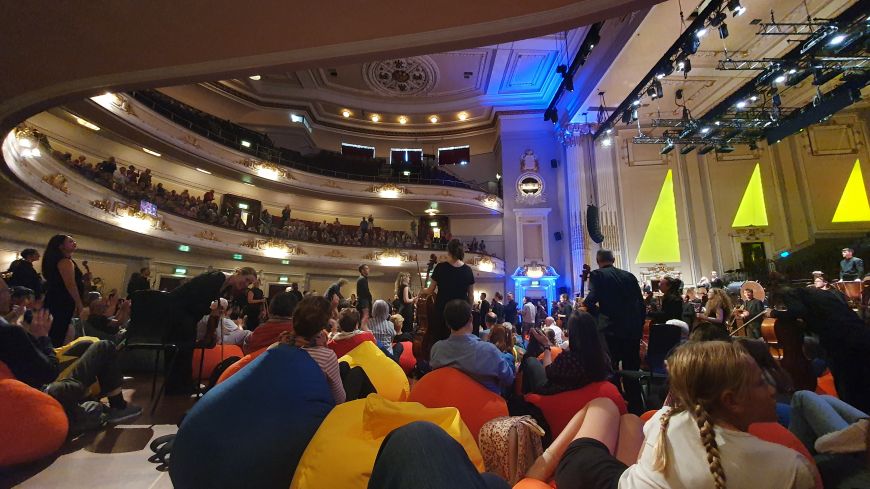
One of the most impressive things about this recital was how the Aurora Orchestra played the full symphony without music – and not only in the performance, but also at rehearsals.
A notable feature of this event was the spoken conversational commentary: it was not only hugely beneficial, immersing us into the wider background story, but helped to make the afternoon a collective and shared experience, through which all felt involved as true participants.
The Fifth Symphony was so pivotal in Shostakovich’s life – especially given his fragile situation after the aggressive rejection of his previous work. While now more diplomatic, and trying to satisfy the demands of his day, the composer continues to be remembered (and well-known) for his genius in generating many layers of meaning, which often need investigation to fully uncover.
Anyway part of the Usher Hall’s ‘Beanbag’ recital series, an interesting feature on this particular occasion was how the musicians greeted, moved amongst and sat amid the audience – this gave us a truly immersive experience, hearing the sounds of an orchestra like never before. The performers rotated places half-way through, giving us an even richer exposure to the diversity of orchestral sounds. I had the wind instruments in the first half and the strings in the second – maybe a relief that the brass stayed at the back!
Shostakovich had to urgently reform his own musical presentation, faced with the hostility and suppression of the Stalinist regime of his time – hence the encoded resistance and irony that this symphony contains. It looks partly back to Beethoven; at its premiere it was an amazing success, but still audience reaction led to suspicion.
The first movement is about a tense journeying through darkness, ending with a doorbell-like ‘celeste’, while an undercurrent of uncertainty nonetheless prevails. The Scherzo shows the additional influence of Mahler – but the same conundrum is seen to remain: what is the underlying meaning of the piece, and what is it that the music is trying to give away?
The following Largo movement was deeply moving – probably reflecting the purges in which a number of Shostakovich’s friends were executed. This was a section also likely influenced by Tchaikovsky – and given the popularity of his own melodies, this might explain why the regime was happy to approve Shostakovich’s new music.
The last movement maybe encapsulated overall what is thought of as the ‘Shostakovich dilemma’: is the Allegro a proud Red Square parade and celebration – or an exaggerated parody of it? Much food for thought – and some delicious music – to continue to digest and ponder.
The recital finished at 3.20pm.
Shostakovich – Inside Out: Monday 18th August, Usher Hall

